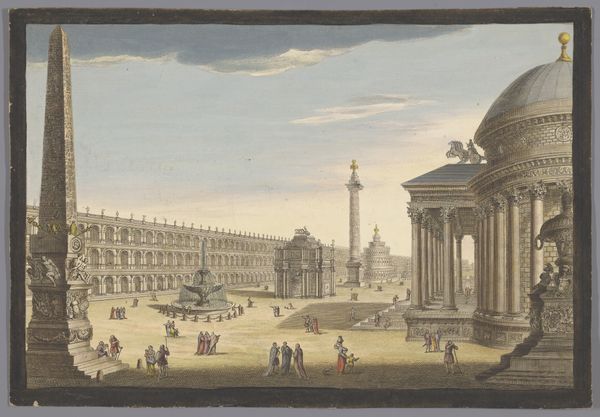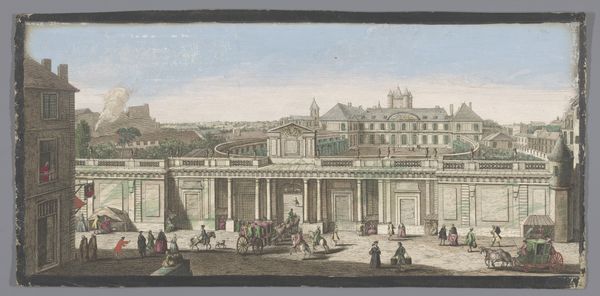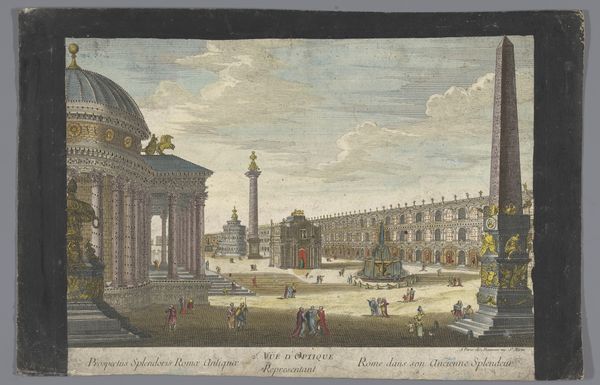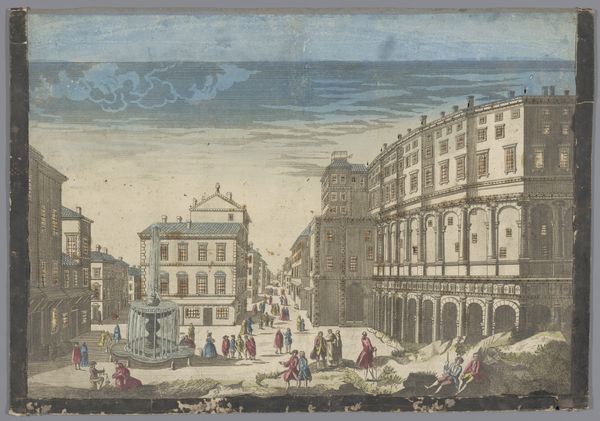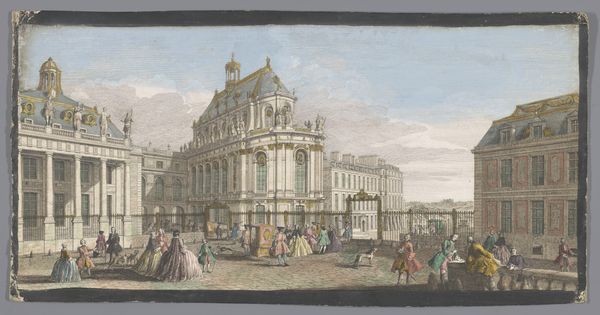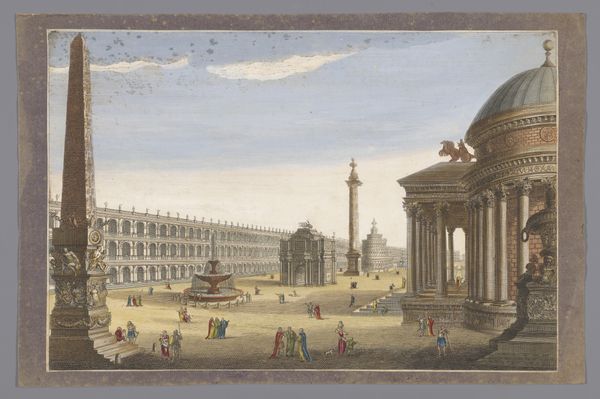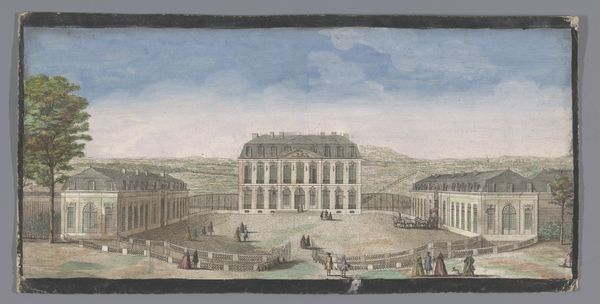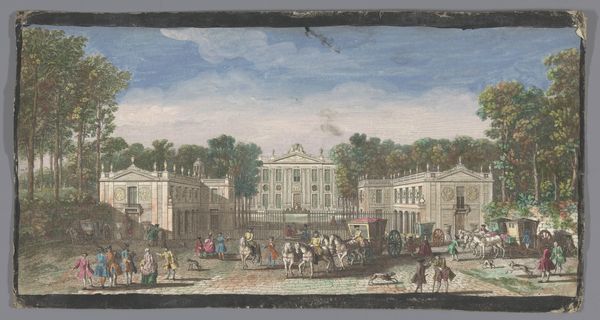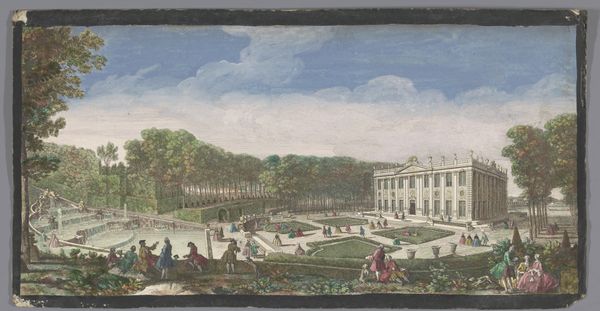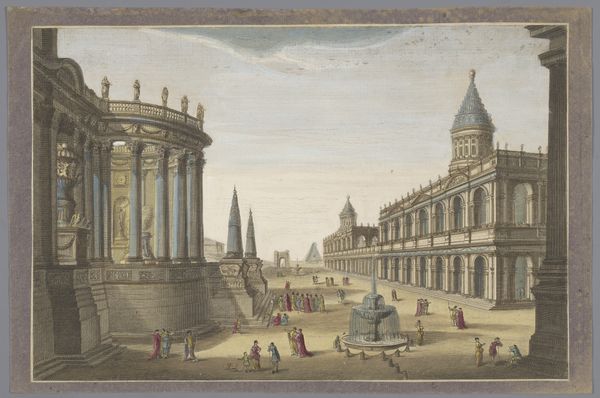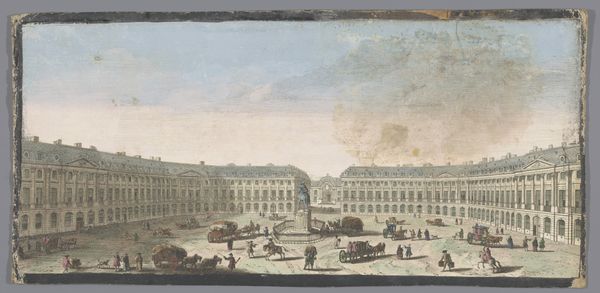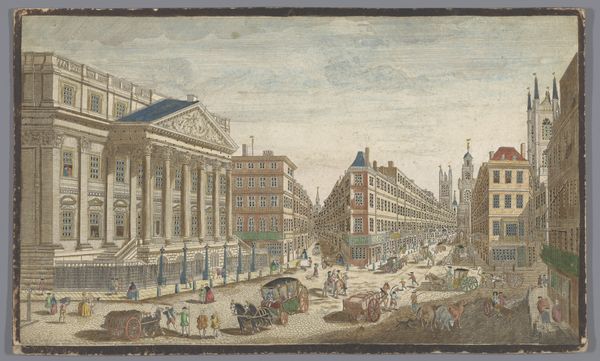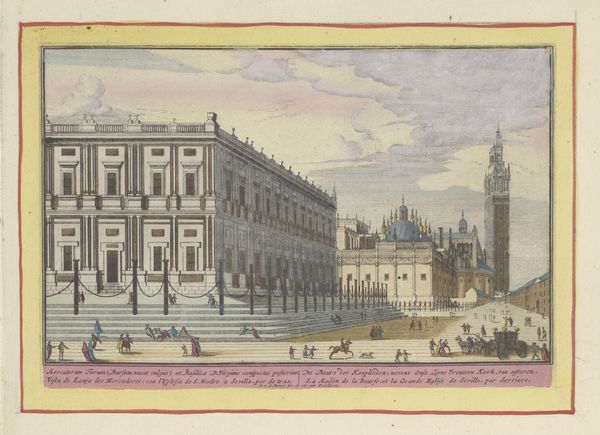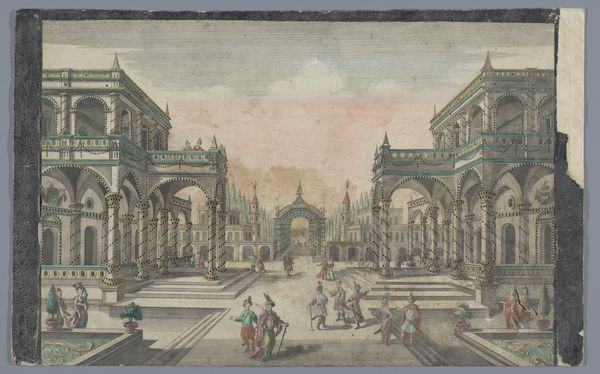
drawing, coloured-pencil, print, watercolor
#
drawing
#
coloured-pencil
# print
#
watercolor
#
coloured pencil
#
cityscape
#
mixed media
#
watercolor
#
rococo
Dimensions: height 235 mm, width 472 mm
Copyright: Rijks Museum: Open Domain
Curator: The opulence just shouts, doesn't it? I'm instantly drawn to the light, almost shimmering quality of the watercolor. Editor: Absolutely. Let’s orient our listeners. This piece, “Gezicht op Hôôtel de Soubise te Parijs," which translates to "View of the Hôtel de Soubise in Paris,” is an 18th-century work currently residing at the Rijksmuseum. Its origins are unknown, making the question of who created it all the more intriguing. We know it employs a mixture of media: drawing, colored pencil, watercolor, and print techniques all combined. It’s pure Rococo, a stage set for aristocracy. Curator: Yes! The colours are so light, like spun sugar. And that theatrical quality… the way the building is presented, almost like a grand reveal. The artist—even though we don't know who it is—has managed to capture a fleeting moment of powdered-wig elegance, wouldn't you agree? Editor: Elegance built upon structures of deep inequality. That's what strikes me most. The meticulous rendering of the Hôtel de Soubise is a celebration of power and privilege. The architectural details, highlighted by those delicate colors, showcase the grandeur enjoyed by a select few during the era, a vision upheld and made possible through labor rendered invisible in plain sight, outside of the picture's border. Curator: True, it’s easy to get lost in the aesthetic pleasure without thinking about the wider context. It’s like a perfectly iced cake with a slightly bitter aftertaste. I mean, I love a good cityscape and here you see everyday activities amidst the grandeur—carriages arriving, people strolling. There’s even a little dog. It almost domesticates the monumental, though unsuccessfully. Editor: Exactly. The seemingly casual inclusion of everyday life doesn’t quite neutralize the statement of power embodied in the architecture. It's Rococo propaganda. I find it a testament to the importance of continuously critiquing not just the images, but the values and the structures they depict and endorse. It shows how visual media worked to define the sociopolitical landscape. Curator: Well, I’ll never look at powdered wigs in the same way again! But I'm still utterly charmed by its pastel prettiness, despite everything. The skill is undeniable. Editor: And perhaps that is its enduring power—to charm, even as we recognize the historical and social realities embedded within its delicate lines. Thank you for helping me consider that.
Comments
No comments
Be the first to comment and join the conversation on the ultimate creative platform.
